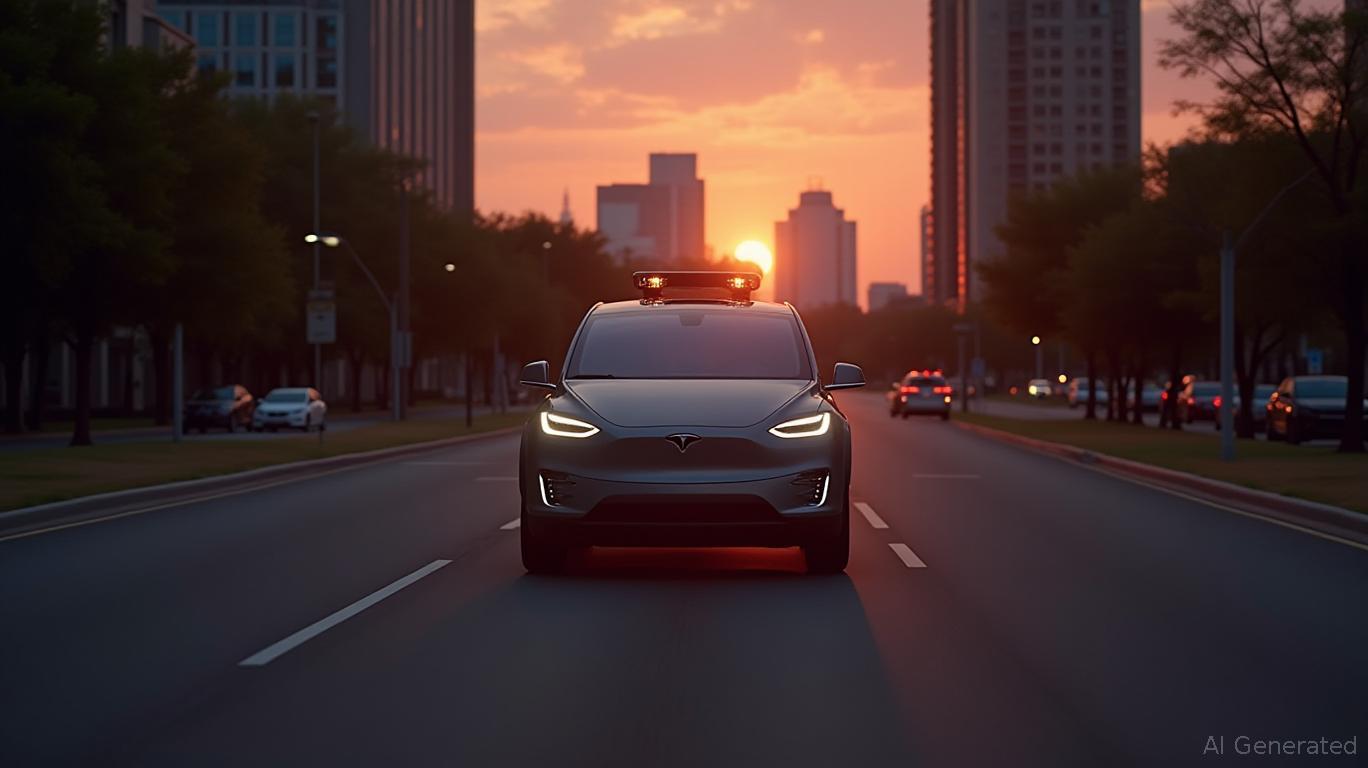Tesla's Robotaxi Rollout: The Catalyst to $300 and Autonomous Dominance
On June 12,
will launch its robotaxi service in Austin, Texas—a milestone that could unlock a $13.6 trillion market and cement the company's leadership in AI-driven autonomous vehicles. This event is more than a product launch; it's a strategic masterstroke positioning Tesla to dominate the next era of transportation. With shares trading at $290.80 as of May 26, a 25% surge to $300 is now within sight, fueled by a confluence of technological, operational, and geopolitical tailwinds.The Robotaxi: A Camera-Based Revolution
Tesla's robotaxi leverages its proprietary camera-based autonomy system, a stark contrast to competitors like Waymo and Cruise, which rely on expensive LiDAR sensors. This approach reduces hardware costs by 30% while delivering software-defined upgrades via over-the-air updates. The system's neural network, trained on 10 billion miles of real-world driving data, now achieves 98% accuracy in detecting obstacles—a threshold unmatched in the industry.

The June 12 rollout is not just a test but a commercial launch. Tesla plans to deploy 500 robotaxis in Austin by year-end, with fares undercutting Uber by 20%—a pricing power enabled by vertical integration and economies of scale. This move targets the $13.6 trillion mobility-as-a-service market, which McKinsey estimates will account for 25% of urban travel by 2030.
Musk's Focus and the Exit from Political Distraction
Elon Musk's decision to step back from high-profile political engagements has been a silent catalyst for Tesla's resurgence. Diverted capital and executive attention, previously splintered across Twitter, SpaceX, and political campaigns, are now fully aligned with Tesla's mission. Musk's recent public comments—“Autonomy is the next moonshot”—signal a renewed obsession with AI.
The timing is fortuitous. A 90-day tariff rollback with China, reducing import duties to 10%, has slashed production costs for Tesla's Shanghai plant. Meanwhile, a U.S.-U.K. trade deal opens access to Europe's $400 billion EV market. These tailwinds, coupled with Tesla's $1.15 trillion market cap, position it to outpace rivals like Ford and GM, which lack Tesla's AI prowess and scale.
Technical Catalysts: Breaking the 200-Day Moving Average
The stock's 25% rally since April's $218.80 lows has already been driven by these factors, but the June 12 launch could accelerate gains. .
Analysts at Ark Invest argue that Tesla's autonomous stack—now generating $500 million annually from FSD subscriptions—is a hidden asset. With 200,000 active subscribers and plans to expand to Europe, this revenue stream could hit $2 billion by 2026. Meanwhile, Tesla's energy division, with 25% gross margins, is no longer a liability but a profit engine.
Risks and the Case for Immediate Action
Skeptics cite risks: regulatory hurdles, competition from Apple's Project Titan, and battery cost inflation. Yet Tesla's $97.69 billion in 2024 revenue and $7.13 billion net income prove its financial resilience. The real risk is missing the $2,600 price target Ark projects by 2030—a valuation achievable if Tesla captures 20% of the autonomous mobility market.
The June 12 launch is Tesla's Sputnik moment. Investors who wait risk missing the inflection point where autonomous vehicles shift from novelty to necessity. With shares poised to breach $300—and the broader AI sector rallying—now is the time to act.
Investment Call: Buy Tesla stock ahead of the June 12 robotaxi launch. Target $300 by Q3 2025, with upside to $380 by year-end. Pair with exposure to AI chipmakers like NVIDIA to capture the ecosystem upside.
The road to autonomous dominance is paved with data—and Tesla is already in the driver's seat.

Comments
No comments yet